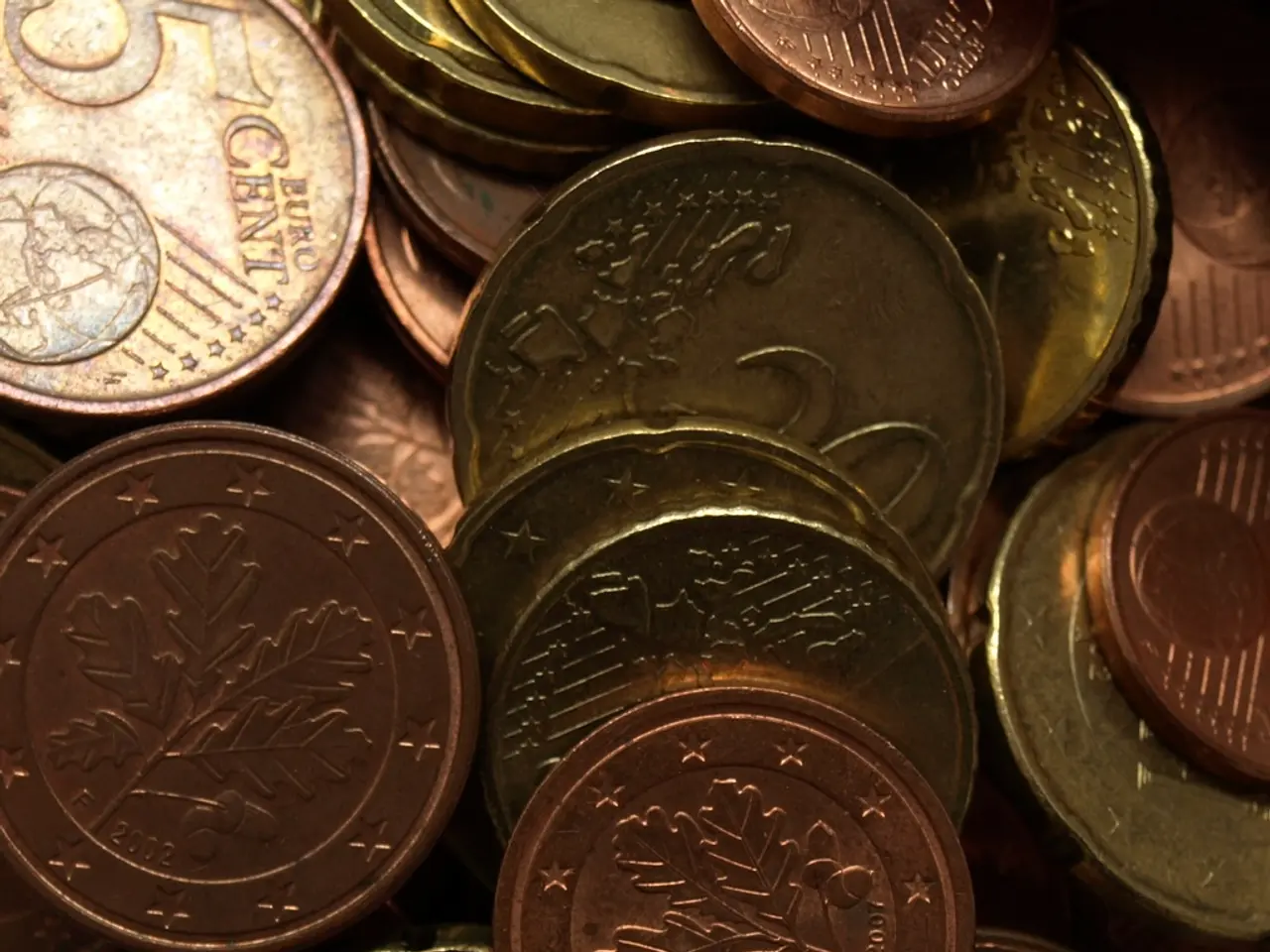Litecoin's Supply Fourfold Greater than Bitcoin's: Key Distinction Revealed
In the world of cryptocurrencies, two of the most well-known digital assets are Bitcoin and Litecoin. While both share similarities, they differ significantly in several key aspects, including supply, transaction speed, fees, mining process, and environmental impact.
Supply
Bitcoin, with its maximum supply cap of 21 million coins, is designed to be scarce, positioning it as a store of value similar to gold. In contrast, Litecoin, with a supply cap of 84 million coins, aims for broader accessibility and use as a transactional currency, with a supply four times larger than Bitcoin's [1][5].
Transaction Speed
When it comes to transaction speed, Litecoin takes the lead. With an average block time of approximately 2.5 minutes, Litecoin enables quicker transaction confirmations, making it suitable for retail payments and frequent smaller transactions [1][2][3][5]. Bitcoin, on the other hand, has an average block time of about 10 minutes, which is more suited for larger or less frequent transactions where security is prioritized.
Transaction Fees
Transaction fees are another area where Litecoin outperforms Bitcoin. Litecoin offers typically lower fees, supporting frequent and cost-effective transfers, which enhances its utility for everyday payments [1][3][5]. Bitcoin, however, generally has higher transaction fees, especially during network congestion, due to miners prioritizing transactions with higher fees [1].
Mining Process
Bitcoin uses the SHA-256 mining algorithm, which requires highly specialized, resource-intensive hardware called ASICs. This leads to very high computational power consumption and makes Bitcoin mining expensive, requiring conditioned physical space and a lot of electricity [1][3][5]. Litecoin, on the other hand, uses the Scrypt mining algorithm, which is less resource-intensive but more memory-demanding, allowing mining with less specialized hardware such as GPUs and CPUs. This makes Litecoin mining more accessible and somewhat less energy-hungry [1][3][5].
Environmental Impact
Both Bitcoin and Litecoin use proof-of-work consensus, requiring significant electricity use. However, Bitcoin's SHA-256 mining consumes enormous amounts of energy, resulting in a very large carbon footprint and generating substantial electronic waste due to frequent hardware upgrades. Litecoin’s Scrypt algorithm is designed to be less resource-intensive and more energy-efficient than Bitcoin’s mining process, reducing its environmental impact somewhat [1][2][3].
In summary, Bitcoin’s design prioritizes scarcity and secure, high-value transactions with higher fees and greater energy consumption, establishing it as "digital gold." Litecoin, with its larger supply, faster transaction speeds, lower fees, and less resource-intensive mining, functions more as "digital silver," geared towards everyday transactions and testing new blockchain innovations [1][5].
[1] - Source for detailed comparison between Bitcoin and Litecoin [2] - Source discussing Litecoin's environmental impact [3] - Source explaining the Scrypt algorithm and its implications for Litecoin mining [4] - Source providing information on Litecoin's halving [5] - Source discussing Litecoin's design for small transactions and retail investors
- Considering various aspects of cryptocurrency investing, some investors may find Litecoin a more appealing choice due to its faster transaction speed, lower fees, and less resource-intensive mining, making it suitable for everyday transactions and retail payments.
- In the realm of financial technology, the blockchain technology behind Litecoin offers broader accessibility and use cases, with its design aiming to support a larger supply and quicker transaction confirmations, reflecting its position as "digital silver" geared towards common usage.




